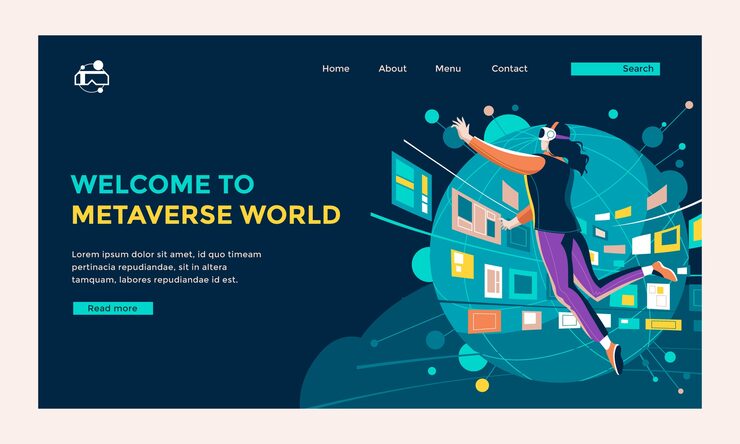Kazakhstan’s reputation as a digital innovator received a boost this month when Kaspi, the country’s leading fintech company, announced a breakthrough in biometric banking. Starting in December, customers will be able to use special ATMs by registering their palm, a technology the company says places it among the first globally, after Amazon One and China’s WeChat. Kaspi’s move highlights that Central Asia’s digital leaders are no longer simply catching up; they are experimenting at the global frontier.
For three decades, the United States has tended to view Central Asia mainly through the lenses of security and natural resources. But that framing is increasingly out of date. Kazakhstan, the region’s largest economy, is quietly building a sophisticated digital ecosystem. Its rapid transformation offers Washington an opportunity to engage in this increasingly important region through technology, data and artificial intelligence rather than just pipelines and resources.
From Oil to Algorithms
Kazakhstan’s government has made digital transformation a central pillar of its economic policy. The country now ranks 24th among 193 nations in digitization and sits in the global top ten for online service availability, ahead of countries such as France, China, and Canada. Ninety-two percent of government services are now available online.
Digitization has helped Kazakhstan reduce administrative barriers, shrink its shadow economy, and strengthen transparency in public services. For Washington, which has long promoted e-governance and data transparency abroad, Kazakhstan’s experience offers a model for collaboration: sharing best practices on data ethics, cybersecurity, and privacy standards, areas where the United States still sets much of the global agenda.
President Kassym-Jomart Tokayev has set an ambitious goal to double Kazakhstan’s GDP by 2029, a target that explicitly depends on digital technology rather than commodity exports. Artificial intelligence is at the heart of that plan.
The government recently launched the National AI Platform, hosting more than 100 AI agents that automate e-government systems, and opened the Alem.cloud Supercomputing Center, powered by NVIDIA H200 processors with performance of around two exaflops, the most powerful computing cluster in Central Asia. These resources support domestic startups, universities, and R&D centers building neural-network and large-language-model solutions.
Two such models, KazLLM and Alem LLM, were released over the past year. Trained on multilingual datasets, they process and generate text in Kazakh, Russian, English, and Turkish.
For the U.S., Kazakhstan’s AI ecosystem provides a concrete partner in promoting open-source AI and responsible standards. American universities, labs, and companies could engage through joint research, ethics frameworks, and AI-for-development projects supported by the U.S. State Department.
Kazakhstan’s digital outreach is not limited to domestic policy. Through the Astana Hub, the country’s flagship international technopark, Kazakhstan has built a network of global innovation centers in Palo Alto, London, Dubai, Saudi Arabia, and China’s Zhangjiang “Asian Silicon Valley.”
Earlier this year, 24 startups from Central Eurasia joined Silicon Valley acceleration programs such as AlchemistX and Silicon Valley Residency, in collaboration with Astana Hub, IT Park Uzbekistan, and American venture partners. Kazakh teams now pitch and prototype directly within the Bay Area’s venture ecosystem, connecting Central Asia’s engineering talent to U.S. investors and mentors.
For Washington, this emerging bridge should be seen as strategic infrastructure – a network of entrepreneurs linking Central Asia’s markets to the U.S. innovation economy.
Furthermore, Kazakhstan’s partnership with Amazon Project Kuiper, announced during President Tokayev’s visit to New York, will bring low-orbit satellite internet coverage to Central Asia. The collaboration integrates Kazakhstan into a global communications network designed to provide high-speed connectivity even in remote areas.
At the other end of the spectrum, the country is experimenting with blockchain infrastructure. The Solana Economic Zone Kazakhstan, launched in Astana this year, is Central Asia’s first blockchain-based economic zone. It pilots digital-asset tokenization with the Astana International Exchange and promotes education in Rust and blockchain engineering. For American firms exploring regulated Web3 environments, this is a potential sandbox for compliant innovation in emerging markets.
Technology ecosystems rely on talent, and Kazakhstan has invested deliberately in building it. At Astana’s new Alem.ai Center for Artificial Intelligence, teenagers study animation, 3D design, and generative AI through the TUMO creative program, while older students join Tomorrow School, a peer-to-peer coding initiative emphasizing teamwork and problem-solving. These programs help bridge education and employability and offer natural opportunities for cooperation with U.S. EdTech and exchange programs.
Another key element of Kazakhstan’s talent strategy is the AI-Sana program, launched in late 2024 to expand artificial-intelligence skills across the education system. The initiative aims to reach around 650,000 students and researchers, offering tiered training, from introductory courses to project-based and startup-oriented modules, in partnership with Coursera, Huawei, and Astana Hub. So far, more than half a million participants have completed AI courses.
Why It Matters to Washington
Kazakhstan’s digital ascent aligns with U.S. strategic priorities. As Washington seeks to diversify supply chains, counter authoritarian models of digital governance, and promote open data flows, it needs partners in regions outside of the traditional West.
By engaging with Kazakhstan’s AI and digital sectors, the U.S. could support interoperable data standards through joint research and technical assistance, invest in secure cloud and satellite connectivity under trusted-network principles, encourage venture collaboration between U.S. accelerators and Central Asian startups and promote AI ethics and regulation via academic and policy exchanges.
Such engagement would not require massive funding, only a shift in mindset: from seeing Central Asia as a periphery of great-power competition to viewing it as a ground for inclusive digital modernization.
Kazakhstan’s digital transformation is often overshadowed by its resource wealth. Yet in a region more associated with pipelines than platforms, the country is building a genuine digital state.
For the U.S., this represents an opening that is as practical as it is strategic. Partnering with Kazakhstan on digital governance, AI, and innovation ecosystems would advance Washington’s goals of open, secure, and ethical technology while strengthening partnerships at the crossroads of Eurasia. The oil age defined the first era of U.S.–Kazakhstan cooperation. The next could well be defined by algorithms.



































